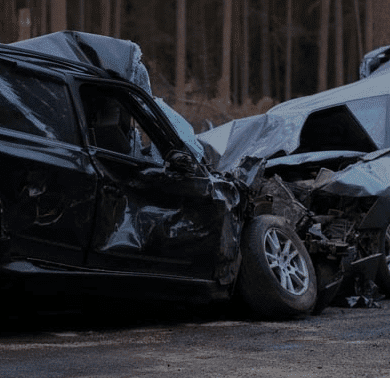
When Does Product Liability Apply to Self-Driving Vehicle Crashes?
In recent years, self-driving vehicles have begun testing on Georgia roads. In addition to these semi-autonomous cars, many newer models of passenger vehicles on the market come with limited self-driving technology, which allows drivers to hand over control to the vehicle’s computer during highway driving. Unfortunately, this technology is far from perfect, and self-driving hardware and software may have design or manufacturing defects that can lead to car accidents.
This raises critical questions. When a self-driving vehicle gets into a crash due to a defect, can accident victims file claims against the vehicle’s manufacturer? Can an injured party pursue product liability in self-driving vehicle crashes in Georgia?
Understanding Product Liability in Georgia
Georgia’s product liability law holds manufacturers strictly liable for injuries caused by a defect in their product. Strict liability means that a defendant is legally responsible for a victim’s injuries, regardless of their actions or intent.
Consumers injured by defective products can also bring negligence claims against manufacturers when a manufacturer commits a careless act or omission in designing, manufacturing, or testing the product that leads to a defect.
Product liability claims can apply to various kinds of consumer goods, including vehicles, auto parts, components of self-driving systems (such as cameras or radar sensors), and software that runs the self-driving system.
Types of Defects That Can Lead to Self-Driving Crashes
The law recognizes three different types of product defects:
- Design defects: A product has a design defect when its design makes it inherently dangerous for its intended or anticipated uses. All versions of the product made to that defective design will be inherently unsafe.
- Manufacturing defects: A manufacturing defect occurs when a product deviates from its design specifications due to errors in assembly or the use of substandard materials in the manufacturing process.
- Marketing defects: Also called a “failure to warn or instruct,” a marketing defect occurs when a manufacturer fails to provide consumers with adequate warnings regarding the dangers of using the product or instructions for the product’s safe use.
Here are some examples of defects in autonomous vehicles that can lead to crashes:
- Faulty sensors or cameras that a self-driving vehicle uses to “see” around the vehicle
- Flaws in the computer code that runs the self-driving system
- Inadequate instructions in the owner’s manual regarding the limitations of a self-driving system or how to use the system correctly and safely
When a Self-Driving System Causes an Accident
An autonomous vehicle or self-driving system may cause an accident when the vehicle’s technology fails in various ways, such as:
- Misreading road signs or traffic signals, such as red lights, stop signs, yield signs, or speed limits
- Losing track of road markings, including lane dividers, the center line, or the fog line
- Failing to detect other vehicles or pedestrians
- Failing to disengage and prompt the driver to resume manual control when the system experiences a fault
These issues may make the vehicle manufacturer or self-driving system developer liable for an accident under a theory of product liability.
Who Can Be Held Liable? Manufacturers, Developers, and Beyond
Depending on the circumstances, various parties may bear financial responsibility for a self-driving vehicle accident. For example, the vehicle’s manufacturer may be to blame for design or manufacturing defects in the autonomous driving system. However, many vehicle manufacturers rely on other companies to provide them with components like cameras and radar sensors. The manufacturer of that component may also bear liability for a car accident.
Vehicle manufacturers may also hire third-party developers to create the software or computer code. Those developers may also become liable for a crash under a product liability claim if a defect in the software code leads to a fault that causes an auto accident.
How Georgia Law Applies to Emerging Vehicle Technology
Georgia Code § 40-8-11 allows a person to operate a fully autonomous vehicle with an automated driving system engaged without a human driver in the vehicle if the vehicle:
- Complies with state law and applicable federal motor vehicle safety standards
- Can remain at the scene of an accident following a crash, and
- Can achieve a minimal risk condition in the event of a failure of the automated driving system
Gathering Evidence in Self-Driving Crash Cases
Autonomous vehicle crashes can involve unique kinds of evidence typically not seen in ordinary motor vehicle accident claims. For example, evidence from a self-driving vehicle’s event data recorder (“black box”) and onboard computers can help provide relevant data about the accident, such as the vehicle’s speed, the maneuvers it made right before the crash, and what information the system had gathered from sensors.
Other relevant evidence for self-driving accident cases includes:
- Accident scene photos or videos
- Surveillance or traffic camera footage
- Eyewitness testimony
- Police accident reports
- Accident reconstruction expert reports and testimony
Why You Need an Experienced Georgia Injury Attorney
Self-driving vehicles are cutting-edge technology, and the law has not necessarily kept pace with the speed of innovation in the field. As a result, personal injury cases involving self-driving vehicles are complex, and having experienced legal counsel can prove critical to obtaining the financial recovery you deserve. Here are some of the key ways that a personal injury attorney can help you with a product liability claim following an autonomous vehicle crash:
- Thoroughly investigating the accident to recover all available evidence, including police reports, eyewitness statements, surveillance or traffic camera footage, and computer logs from the self-driving vehicle
- Working with software, automotive engineering, or accident reconstruction experts as needed to determine whether a defect in the automated driving system caused the crash
- Documenting your injuries and losses to determine how much compensation you are entitled to recover
- Identifying potentially liable parties and submitting demand letters to begin settlement negotiations
- Taking your product liability claims to court and trial when necessary to pursue maximum compensation on your behalf
Ready to take the first step toward justice after a self-driving vehicle accident in Georgia? Contact The Scott Pryor Law Group today for a free, no-obligation consultation with an experienced and tenacious personal injury lawyer. We’re ready to get to work on your case, and at no upfront cost to you.











